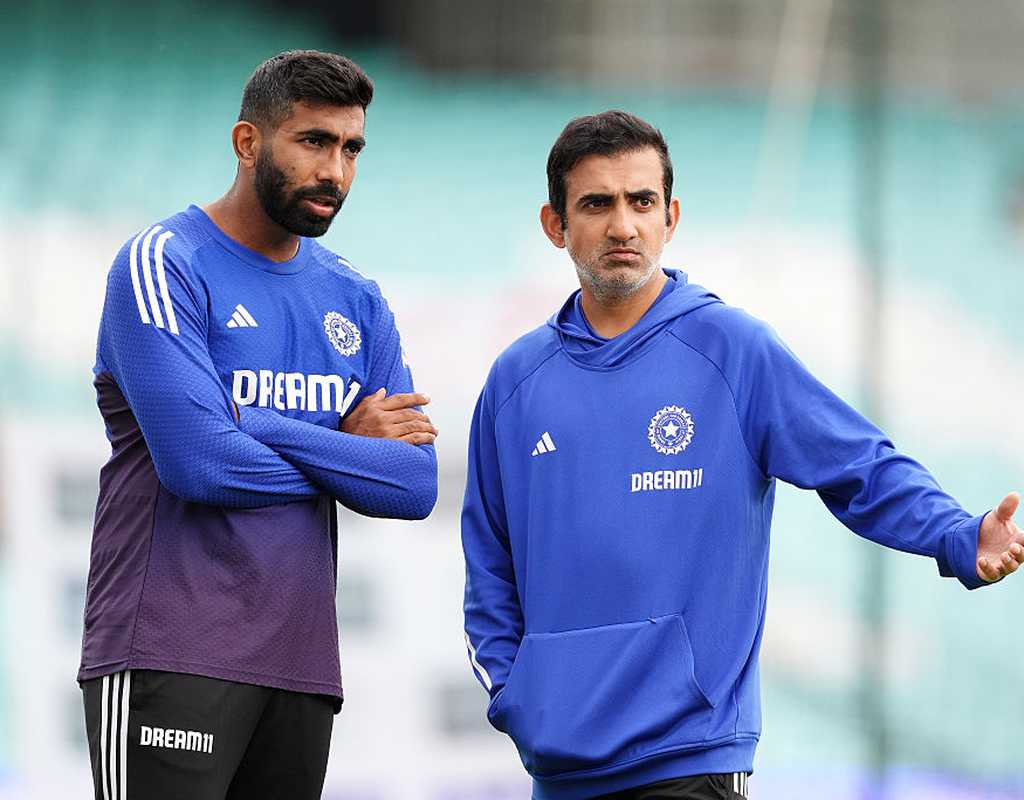Jasprit Bumrah’s Rest Sparks Controversy Ahead of Series Finale
India’s star fast bowler, Jasprit Bumrah, has been at the center of attention during the ongoing Anderson-Tendulkar Trophy series between India and England. Bumrah, who was rested for the Oval Test due to a pre-planned decision to manage his workload after a back injury in Australia, has sparked debates and raised questions about the team’s strategy.
Complex Decision-Making Process
Ryan ten Doeschate, India’s batting coach, addressed the situation, describing it as a “complex issue.” He explained that Bumrah had committed to playing only three out of the five Tests in the series, leaving it up to the team management to decide which matches he would participate in. Despite Bumrah’s impressive performance in the games he played, with 14 wickets to his name, the management felt it was crucial to respect the bowler’s physical condition and honor his initial agreement.
Ten Doeschate shed light on the thought process behind selecting the three Tests for Bumrah to feature in, highlighting the team’s efforts to balance his workload and ensure his availability for crucial matches. The decision to rest Bumrah for the Oval Test, despite the series being on the line, was based on a careful assessment of the pitch conditions and the bowler’s overall fitness.
Impact on Team Dynamics
While Bumrah’s absence was a strategic move to preserve his fitness, England now faces a setback of their own with Chris Woakes suffering a shoulder dislocation during the first day of the Oval Test. Woakes, who has been a key player for England throughout the series, may be sidelined for the remainder of the match, posing a challenge for the team.
The injury to Woakes has highlighted the physical demands of Test cricket and the importance of managing players’ workloads effectively. With both teams facing key personnel issues, the series finale promises to be a test of depth and resilience for India and England.
Looking Ahead
As the teams prepare for the conclusion of the Anderson-Tendulkar Trophy series, the focus will be on how they adapt to the absence of key players and adjust their strategies accordingly. Bumrah’s rest and Woakes’ injury have added a layer of unpredictability to the final Test, setting the stage for an intriguing battle between two top cricketing nations.
Stay tuned for more updates as the series reaches its climax, with both India and England aiming to finish on a high note despite facing challenges on the personnel front.
The Importance of Load Management in Cricket
Load management has become a crucial aspect of modern-day cricket, with teams carefully monitoring the workloads of their key players to prevent injuries and ensure peak performance. Jasprit Bumrah’s rest during the Anderson-Tendulkar Trophy series highlights the emphasis placed on player preservation in the grueling world of international cricket.
With the rise of packed schedules, players are constantly in action across formats, leading to an increased risk of burnout and injuries. By strategically resting players like Bumrah, teams can maintain their star performers’ longevity and effectiveness over the course of a demanding season.
The Evolution of Team Strategies
The decision to rest Bumrah for a crucial Test match exemplifies a shift in team strategies towards long-term planning and the prioritization of player welfare. In the past, players might have been expected to push through injuries or fatigue, compromising their performance and risking further harm to their bodies. However, with a greater understanding of sports science and the benefits of rest, teams are now more inclined to make decisions that benefit the player’s well-being in the long run.
By rotating players and managing workloads effectively, teams can ensure that their squad remains fresh and competitive throughout a series or tournament. This approach not only safeguards players’ health but also optimizes their performance when they do take the field, as seen in Bumrah’s impactful bowling displays in the matches he participated in.
The Unpredictability of Cricket
Cricket, known for its unpredictability, often throws curveballs that teams must navigate adeptly. Injuries, form slumps, and external factors can all influence the outcome of a match or series, making adaptability a key trait for successful teams.
The absence of key players like Bumrah and Woakes introduces an element of uncertainty into the series finale, challenging both India and England to rethink their strategies and rely on their depth to fill the gaps left by the injured players. This unpredictability adds excitement to the sport, keeping fans on the edge of their seats as they await the outcome of the final Test.
The Psychological Aspect of Team Sports
Beyond the physical aspect of load management and player injuries, there is a psychological component to consider in team sports. The mental resilience of players, especially when faced with setbacks or unexpected changes, can determine the outcome of a match.
As India and England gear up for the series finale, the mental strength of both squads will be tested as they adapt to the challenges presented by key absences. How players respond to adversity, regroup as a team, and maintain focus under pressure will play a significant role in determining the winner of the Anderson-Tendulkar Trophy.
As fans eagerly anticipate the final showdown between these cricketing giants, the stage is set for a thrilling conclusion to a series marked by controversies, injuries, and strategic decisions that have kept spectators captivated throughout.
By delving into the nuances of load management, team strategies, the unpredictable nature of cricket, and the psychological aspects of team sports, we gain a deeper understanding of the dynamics at play in the world of international cricket. As the series finale unfolds, all eyes will be on how India and England navigate these challenges and emerge victorious in the face of adversity.

